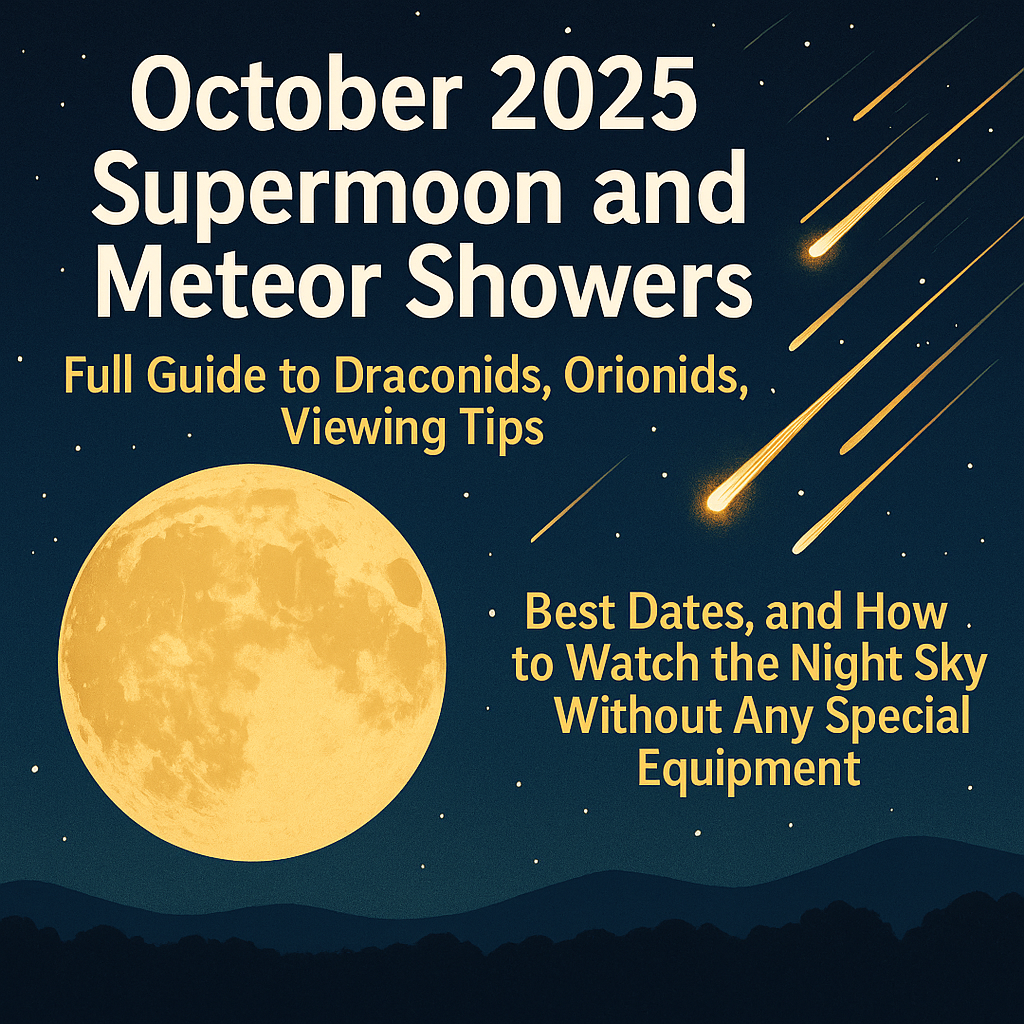October 2025 Supermoon and Meteor Showers: Full Guide to Draconids, Orionids, Viewing Tips, Best Dates, and How to Watch the Night Sky Without Any Special Equipment
October 2025 Skywatching: A Supermoon and Two Meteor Showers You Can See With the Naked Eye
Published: October 2, 2025 • Category: Science & Space
Why This Month Is Special
October brings three major sky highlights you can enjoy without a telescope:
a supermoon on October 6, the friendly Draconid meteor shower between October 6–10,
and the well-known Orionids peaking on October 21.
These are safe, family-friendly night sky events – perfect for casual stargazing.
Key Dates
- October 6 – Supermoon (the Moon appears slightly larger and brighter as it’s closer to Earth).
- October 6–10 – Draconids (~10 meteors/hour, radiant in Draco). Best right after dusk.
- October 21 – Orionids peak (~20 meteors/hour, linked to Halley’s Comet). Best late evening to early morning.
Tips for Beginners
- Find a dark spot away from city lights.
- Allow 20–30 minutes for your eyes to adjust to the dark.
- Avoid bright phone screens or use a red filter mode.
- No telescope needed – meteors move fast, wide view is best.
- Stay comfortable – bring warm clothes, a blanket or chair, and a hot drink.
What You Are Seeing
A supermoon happens when the Moon’s full phase coincides with its closest approach to Earth.
The Draconids come from debris left by comet 21P/Giacobini–Zinner,
while the Orionids are fragments of Halley’s Comet, offering fast, bright meteors.
FAQ
Do I need special equipment?
No. The best way is simply to look up with your own eyes. A wide field of view is ideal.
Where should I look?
For Orionids, face the southeast sky (Northern Hemisphere). Meteors can appear anywhere, not just near Orion.
How many meteors will I see?
Under dark skies, Orionids usually produce around 20 meteors per hour. Draconids are weaker but still fun.
Is it safe?
Yes. Just choose a safe observing spot, dress warmly, and enjoy the view.




Post Comment